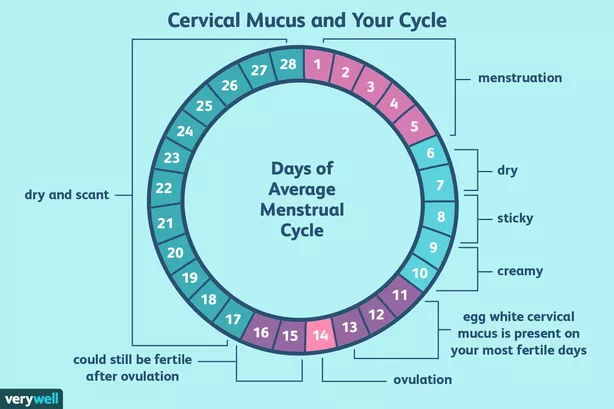Vaginal Discharge 101 - What’s Normal and What’s Not?
Technically speaking, vaginal discharge is a mix of dead cells, largely from the cervix as well as the vagina, that keeps our body bacteria free. So, in spite of what society (not that society talks about vaginal discharge in general, but moving on) will have us believe, vaginal discharge is actually not a filthy fluid that the body just excretes out of disgust. It is a very natural process that allows the vagina to maintain itself, and increase lubrication for the purposes of walking (yes, those who are sexually active do NOT discharge more than usual) and sex.

Vaginal Discharge - A Timeline Through Your Menstruation Cycle
Despite what most of us think, news flash! your vaginal discharge is supposed to take on different consistencies and forms depending on what day of the month it is. If we were to make a division taking our menstrual cycle as the measuring scale, we’ll be able to table them into the following categories –
- The Menstrual Cycle – Vaginal discretion during this time is minimal, because fluids are regularly being expelled out as menstrual blood anyway, so during the rare circumstances where it does occur (which is again, perfectly normal) we don’t really notice it.
- My period is done, now what? – Even during this time, discharge is either absent or extremely patchy and dry.
- As your ovulation nears – Discharge starts to thicken and the texture gets slightly sticky and creamy, color ranging from cloudy white to slightly yellow. This increase is due to high estrogen levels, which triggers the cervix into releasing more fluids.
- During ovulation – You’ll feel your hush-hush part get much wetter than it usually is and you’ll be glad to know that, this actually has nothing to do with you getting sexually aroused by watching porn at night. So, as your approximate ovulation date nears, the discharge gets progressively thicker, due to peak estrogen levels. During ovulation, its consistency can be compared to that of a raw egg-white. The color is a hazy-cloudy white, and it can stretch upto 2-3 inches in your fingers. It is said that at its max, discharge can be upto 95% water.
- Post ovulation – Similar to the post menstrual discharge, extremely dry and minimal. We’re done with one full month cycle!
So, the moral of the story is: YES, it is perfectly normal to have varying consistencies of discharge during different times. You should however make sure that you clean your vagina regularly using just normal water – vaginal cleaning products are a big no-no, as they mess up with your pH level.

Signs That You Need To Visit A Doctor
Now that we have successfully busted some myths around vaginal discharge, let’s move on to the part where we talk about when things are seriously wrong, when you absolutely need to visit a doctor.
- Thick, clumpy, cottage cheese like – It might indicate vaginal fungal/yeast infections, and is not sexually transmitted. It occurs due to an alteration in the pH level of the vagina, and has also been observed in diabetic and over-stressed patients.
- Yellowish grey, dense fluid, fishy odour – This is usually an indication of bacterial vagionisis and while the exact cause of the infection is still unknown, it has usually been associated with patients having smoking habits or unprotected sex with multiple sexual partners.
- Green, frothy discharge, foul smelling – These symptoms typically point towards Trichomoniasis, and is a sexually transmitted infection. However, usage of same bathing suits or towels by multiple persons is another factor that might cause the disease
- Cloudy, yellowish, painful urination – It typically points towards Gonorrhea and is sexually transmitted
- Blisters in vagina, painful urination – This points towards genital herpes, and occurs due to lack of vaginal care and hygiene.
- Brownish spots, reddish specks – While we may view this as an aftermath of an irregular cycle, or even just normal spotting, it might be an indication of cancerous tumors or cysts developing within the vagina.
While we have established that vaginal discharge is completely normal, overly excessive discharge can be due to reasons that require medical attention –
- Rupture of Intra Uterine Disc
- Excessive use of tampons
- Certain parts of your vagina might have ruptured themselve

Conclusion
With this, we have finally come to the end of our myth-busting session! Fun Fact: 80% of women in India alone ignore the importance of internal hygiene, and while eight out of every 10 women in India are at the risk of vaginal infections, hardly any of them actually book a doctor’s appointment. Even though the process is extremely normal, it has been red-labeled by society, and hence, conversations around the topic rarely take place. (but we just had a huge one now, so yay!)
Cover Illustration :Clue App
Author


1 thought on “Vaginal Discharge 101 – What’s Normal and What’s Not?”
Had such a great time reading this, it was wonderful!